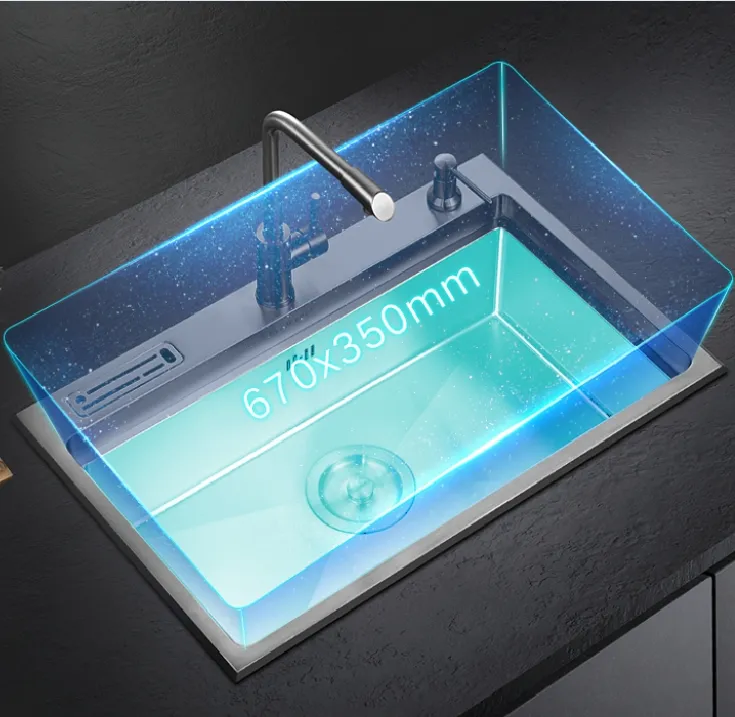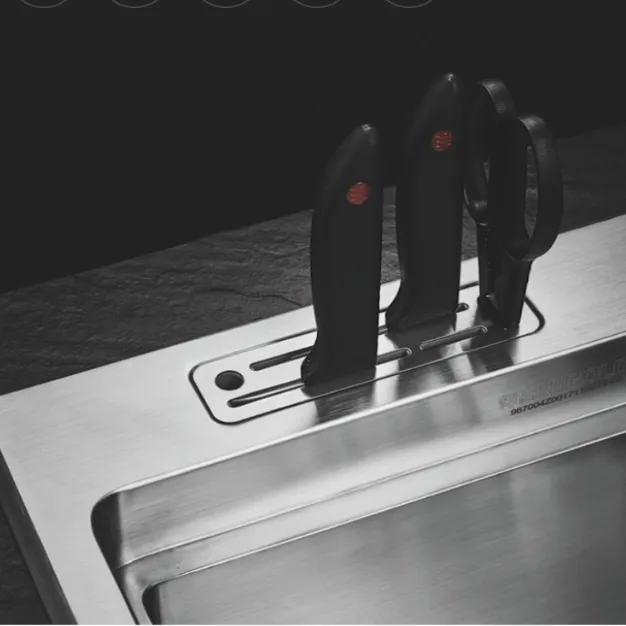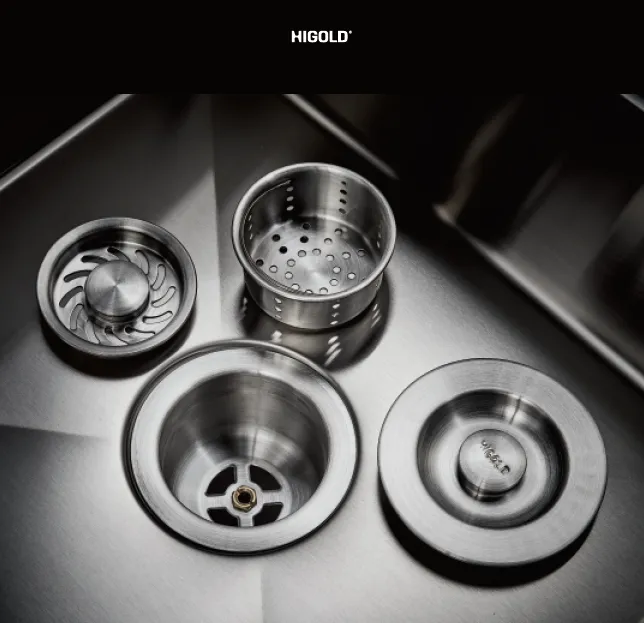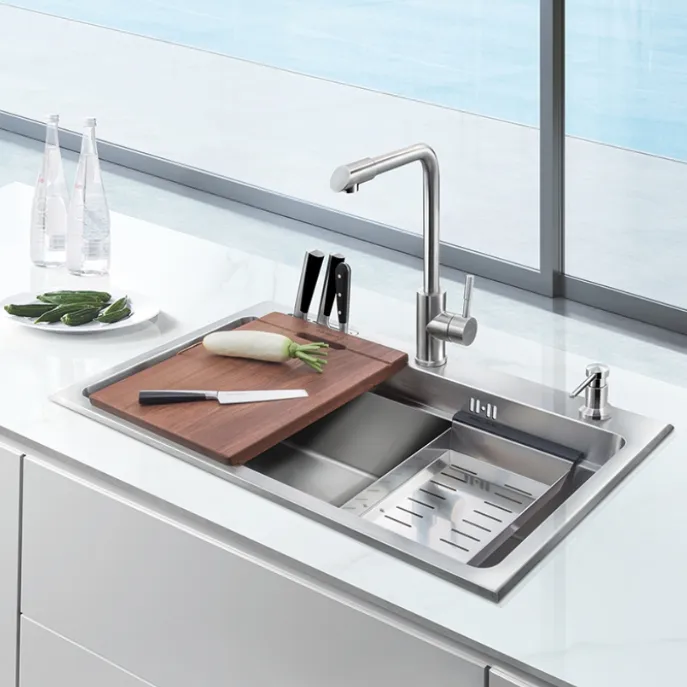Stainless steel sinks are a common fixture in modern kitchens, gaining widespread popularity among consumers for their durability, ease of cleaning, and simple, elegant appearance. The kitchen is the hub of daily cooking and cleaning, and the sink, as a crucial component, carries a significant workload.
Many people may inadvertently pour boiling water into their sinks during daily use, especially when cooking. This seemingly simple action, however, is it truly appropriate to do so with a stainless steel sink? What effects does boiling water have on a stainless steel sink? Will it damage the sink?
This article will address the question of whether it's safe to pour boiling water into a stainless steel sink, focusing on the material properties of stainless steel, the effects of boiling water, and potential risks associated with daily use. It will also provide some relevant advice.

What are the material properties of a stainless steel sink?
Stainless steel kitchen sinks are typically made of 304 stainless steel, a widely used alloy primarily composed of iron, chromium (Cr), and nickel (Ni). Its key properties include:
• Corrosion resistance: 304 stainless steel offers excellent corrosion resistance, resisting corrosion from most acids and bases. This is why it is widely used in kitchens.
• High temperature resistance: 304 stainless steel can withstand high temperatures, generally exceeding 800°C, but this is limited to short-term exposure. Continuous exposure to high temperatures may cause oxidation, discoloration, or even localized deformation of the stainless steel surface.
• Hardness and toughness: Stainless steel exhibits excellent hardness and toughness, making it generally less susceptible to physical damage such as scratches or impacts.
• Thermal conductivity: Compared to other metals, stainless steel has poor thermal conductivity, meaning it does not conduct heat as quickly as copper or aluminum.
These properties make stainless steel sinks excellent in most kitchen environments, but their adaptability to high temperatures, particularly direct contact with boiling water, is somewhat limited.

What are the effects of boiling water on a stainless steel sink?
Pouring boiling water into a stainless steel kitchen sink may seem harmless, but it can actually have potential adverse effects. Boiling water typically reaches a temperature of 100°C. This high temperature, if in direct contact with the sink's surface, can pose certain risks.
1. Thermal Expansion and Cooling Process
Stainless steel is a metal with thermal expansion properties. Simply put, rising temperatures cause the surface of stainless steel to expand and contract upon cooling. Although stainless steel is highly heat-resistant, if boiling water is suddenly poured into a kitchen sink, especially if the sink has been at room temperature or a low temperature for an extended period, the surface may experience uneven thermal expansion and contraction, resulting in deformation or discoloration.
If a kitchen sink's surface is subject to uneven temperature differences, certain areas of the metal may crack or deform due to the uneven expansion. Excessive temperature differences can accelerate the aging or damage of welds within the sink, affecting the sink's seal and structural stability.
2. Surface Oxidation and Discoloration
Although 304 stainless steel is highly heat-resistant, prolonged exposure to high temperatures can still cause surface oxidation. Especially when boiling water comes into contact with the surface of a stainless steel kitchen sink, the high temperatures can damage the protective coating on the sink's surface, accelerating the oxidation process. Surface oxidation can cause discoloration, such as dark spots or a black discoloration, and in severe cases, can even affect the sink's aesthetics.
3. Wear of the Sink's Surface Coating
Many stainless steel sinks may have a protective coating or polish to improve their stain and corrosion resistance. However, frequent use of boiling water can damage these coatings, compromising the overall quality of the sink. This damage accumulates gradually and may not be noticeable initially. However, over time, the sink's surface can become uneven, prone to stains and buildup, and difficult to clean.
4. Impact on Under-Sink Pipes
When boiling water is poured into a stainless steel kitchen sink, not only can the sink itself be affected, but the pipes underneath can also be exposed to high temperatures. This is especially true if the kitchen sink is connected to non-heat-resistant plastic pipes. This sudden high temperature can cause the pipe material to age, deform, or even break. Although most kitchen drain pipes are designed with heat resistance in mind, it's still important to avoid excessively hot water flowing directly through the pipe system.

How to Protect Stainless Steel Sinks from High Temperatures?
While boiling water can have some effects on stainless steel sinks, in most home kitchens, occasional exposure to boiling water is unlikely to cause serious problems. However, there are still some details to be aware of during daily use. The following points can help consumers avoid potential risks associated with boiling water in stainless steel sinks.
1. Avoid Long-Term Exposure to Boiling Water
For stainless steel sinks, occasional exposure to boiling water isn't a major concern. However, prolonged exposure to boiling water, especially without any buffering measures, can gradually damage the sink surface. Therefore, it's best to avoid storing boiling water in the sink for extended periods, especially if it's not rinsed promptly.
2. Use a Hot Water Buffer
If boiling water is handled in the kitchen, it's recommended to use appropriate hot water buffering measures. For example, use pot holders, heat pads, and other tools to avoid pouring boiling water directly into a stainless steel kitchen sink. Pour the hot water into a heat-resistant container and allow it to cool slightly before pouring it into the sink to minimize damage caused by temperature differences.
3. Regularly Inspect the Sink and Pipes
If a stainless steel sink is used for an extended period, it's important to regularly inspect the sink and the plumbing system underneath. Especially for homes that frequently use high-temperature water, inspect the kitchen sink for signs of oxidation or discoloration, and check the pipes for signs of aging or cracks. If any problems are found, repair or replace them promptly to ensure the sink's proper function.
4. Keep the Sink Clean and Dry
Although stainless steel sinks are highly durable, keeping them clean and dry is still crucial to extending their lifespan. After using boiling water, rinse the sink with warm water and wipe dry to prevent surface corrosion or discoloration caused by hot water residue.

Can Higold manufacture sinks in non-standard sizes?
Yes, customized sizing is available for wholesale or project-based orders. Our engineering team can adjust dimensions, bowl depths, and mounting styles to meet customer specifications. Whether for luxury kitchens, compact apartments, or commercial installations, Higold’s flexible manufacturing allows buyers to receive products that exactly meet their market requirements.


